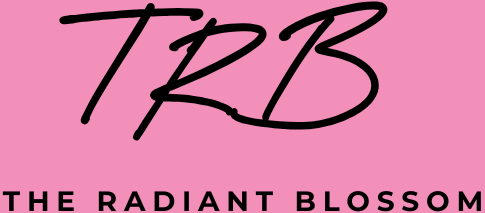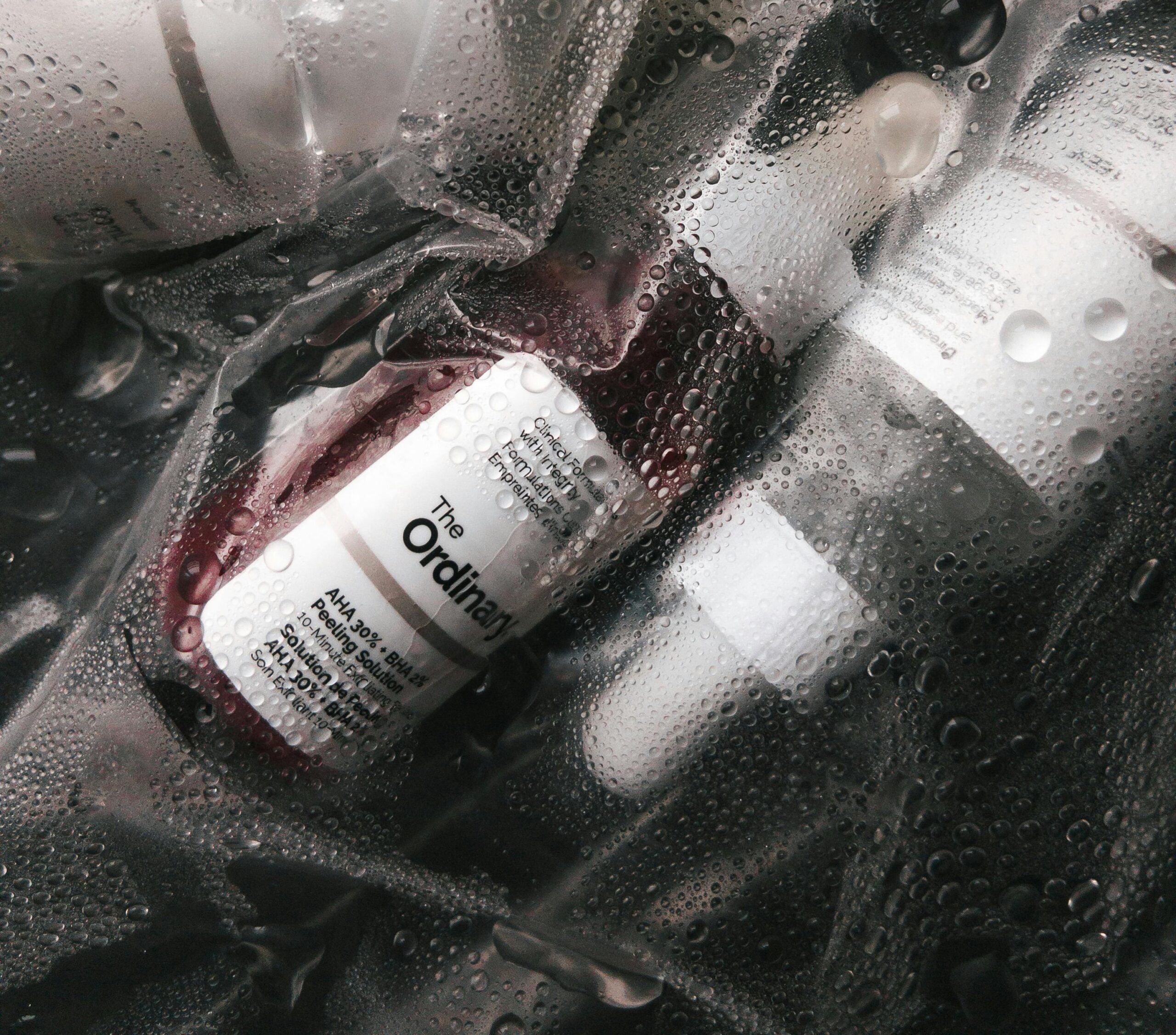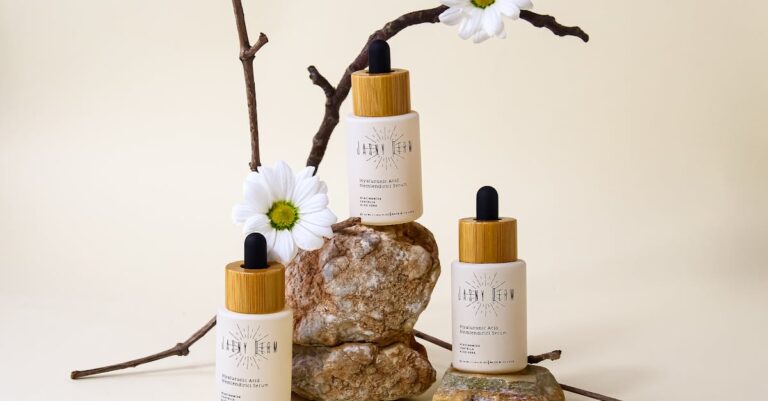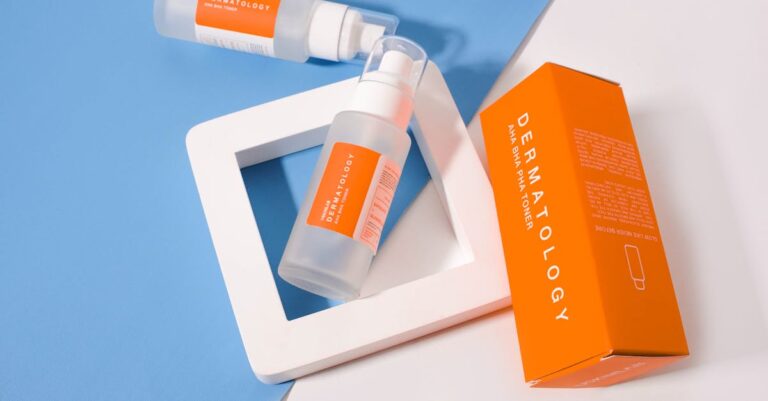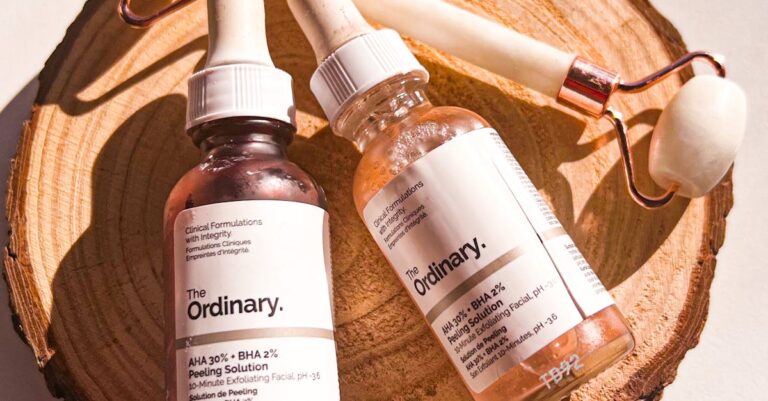Alpha Hydroxy Acids—more commonly known as AHAs—are a group of naturally occurring acids that have become essential players in modern skincare. Whether you’re dealing with dullness, fine lines, or uneven texture, AHAs are often the go-to solution recommended by dermatologists and estheticians alike.
But what exactly are they?
AHAs are water-soluble acids typically derived from fruits, milk, and sugar cane. They work on the surface layer of the skin, helping to gently exfoliate by dissolving the “glue” that holds dead skin cells together. The result? Brighter, smoother, more even-toned skin.
There’s a reason AHAs are included in everything from cleansers to professional chemical peels—they offer a scientifically backed way to improve your skin’s appearance and function, often with visible results in a matter of weeks.
In this article, we’ll dive into how AHAs work, which types are best for your skin, how to use them safely, and how to get the most out of these powerhouse ingredients.
How AHAs Work on the Skin
AHAs don’t just sit on the surface of your skin—they work. Their main claim to fame is exfoliation, but they do a bit more than that.
Exfoliation, the AHA Way
Unlike physical scrubs that use rough particles to manually slough off dead skin, AHAs work chemically. They loosen the bonds (called desmosomes) that hold dead skin cells together, helping them shed more easily. This uncovers fresher, newer skin beneath—and over time, leads to a smoother texture and more even tone.
They Hydrate, Too
Some AHAs, especially lactic acid, also act as humectants. That means they draw moisture into the skin, helping it stay soft, plump, and hydrated. This is part of what makes lactic acid such a good choice for dry or sensitive skin types.
Encouraging Skin Cell Turnover
Regular use of AHAs can speed up the natural cell turnover process, which tends to slow down with age. By encouraging the skin to renew itself faster, AHAs help fade dark spots, fine lines, and surface-level scars more efficiently.
Improved Skin Texture and Tone
With consistent use, many people see improvements in:
- Dullness
- Uneven pigmentation
- Fine lines
- Rough patches
All of this makes AHAs great multitaskers—exfoliators that also help your skin look more vibrant and youthful.
Skincare Benefits of AHAs
AHAs aren’t just popular—they’re popular for a reason. These exfoliating acids bring a wide range of skin benefits, especially when used consistently and correctly. Here’s what they can do for your skin:
1. Brighter, More Radiant Skin
By sweeping away dead skin cells, AHAs help reveal a fresher layer of skin underneath. This can instantly improve dullness and give your complexion a healthy glow.
2. Smoother Texture
If your skin feels rough or looks uneven, AHAs can help refine the surface. Over time, they reduce the appearance of tiny bumps, flakiness, and dry patches.
3. Fades Hyperpigmentation
AHAs, especially glycolic and lactic acid, are known to lighten dark spots like sun damage, melasma, and post-acne marks by promoting faster skin cell turnover.
4. Reduces Fine Lines and Wrinkles
Although they won’t work like Botox or fillers, AHAs can soften the appearance of fine lines. By encouraging collagen production and removing surface damage, they can improve skin firmness and elasticity over time.
5. Helps with Mild Acne
While BHAs (like salicylic acid) are typically better for deep, oily breakouts, AHAs can still help clear clogged pores and reduce the look of acne scars or texture issues. Mandelic acid in particular is gentle but effective on acne-prone skin.
6. Boosts Absorption of Other Products
When dead skin is out of the way, serums and moisturizers can penetrate more deeply and work more effectively. It’s like clearing the path for the rest of your skincare routine to shine.
In short, AHAs offer a combo of instant gratification and long-term results, making them a standout ingredient for anyone looking to level up their skincare.
AHA Types and Their Specific Roles
Not all AHAs are created equal. Each one has its own molecular size, strength, and skin benefits. Here’s a breakdown of the most common AHAs you’ll see in skincare—and what they’re best for.
Glycolic Acid
- Source: Sugar cane
- Molecular size: Smallest of all AHAs
- Key traits: Fast penetration, highly effective
- Best for: Fine lines, sun damage, rough texture
- Caution: Can be irritating for sensitive skin due to its strength
Glycolic acid is the AHA gold standard. Because it penetrates the skin deeply, it’s ideal for people looking to improve aging skin, acne scars, or uneven texture—but it can sting a bit if you’re new to acids.
Lactic Acid
- Source: Milk or synthetic
- Molecular size: Slightly larger than glycolic
- Key traits: Hydrating, gentler exfoliation
- Best for: Dry or sensitive skin, dullness
- Bonus: It also helps improve skin’s moisture levels
Lactic acid is a fan favorite for beginners or those with drier skin. It exfoliates without over-drying and often leaves skin feeling soft and dewy.
Mandelic Acid
- Source: Bitter almonds
- Molecular size: Much larger—slow penetration
- Key traits: Gentle, antibacterial
- Best for: Acne-prone skin, darker skin tones, sensitive skin
- Fun fact: Helps with both breakouts and pigmentation
Because mandelic acid penetrates slowly, it’s less likely to cause irritation. It’s especially useful for acne or post-inflammatory hyperpigmentation.
Citric Acid
- Source: Citrus fruits
- Primary role: More often used to adjust pH and stabilize products
- Best for: Mild brightening, antioxidant support
Citric acid isn’t usually the main exfoliator in products, but it adds a brightening kick and helps balance formulas.
Malic Acid & Tartaric Acid
- Sources: Apples (malic), grapes (tartaric)
- Roles: Typically used alongside other AHAs
- Supportive action: Help maintain pH balance and enhance effectiveness
These aren’t usually strong enough to act alone but can enhance the performance of other acids in a blend.
AHA Blends (a.k.a. cAHAs)
- You’ll often see combined AHA formulas (like glycolic + lactic) that aim to balance strength and gentleness.
- Great for people who want multi-layered results without going too hard on a single acid.
Each type of AHA serves a purpose—so whether you’re looking for glow, clarity, or smoothness, there’s likely a perfect match.
Suitable Skin Types and Concerns
AHAs are versatile, but not every acid suits every skin type. The right choice depends on your skin’s behavior, sensitivity level, and your specific goals. Here’s how to match AHAs to your skin’s needs:
Dry Skin
- Best AHAs: Lactic acid, mandelic acid
- Why: These AHAs not only exfoliate but also retain moisture, which helps prevent flakiness or tightness.
- Tip: Look for products that combine AHAs with hydrating ingredients like hyaluronic acid or glycerin.
Sensitive Skin
- Best AHAs: Mandelic acid, low-strength lactic acid
- Why: Gentler penetration, less irritation.
- Avoid: High-strength glycolic acid, especially without soothing ingredients.
- Tip: Start slow—once a week—and always patch test.
Normal/Combination Skin
- Best AHAs: Glycolic acid or blends
- Why: You can usually tolerate moderate-strength formulas and benefit from both resurfacing and glow-boosting effects.
- Tip: Rotate between acids or use an AHA toner every other day.
Oily or Acne-Prone Skin
- Best AHAs: Mandelic acid, glycolic acid
- Why: Mandelic acid is antibacterial and helps with breakouts, while glycolic can unclog pores and fade leftover marks.
- Tip: If acne is your main issue, pair AHAs with BHA (salicylic acid) or use a product that blends both.
Mature or Sun-Damaged Skin
- Best AHAs: Glycolic acid
- Why: It penetrates deeply to smooth fine lines, fade dark spots, and stimulate collagen over time.
- Tip: Consider layering with peptides or antioxidants for enhanced anti-aging effects.
Darker Skin Tones
- Best AHAs: Mandelic acid, lactic acid
- Why: These acids are gentler and less likely to trigger post-inflammatory hyperpigmentation (PIH).
- Tip: Always use sunscreen, as darker skin can hyperpigment more easily with sun exposure + exfoliation.
General Rule: If you’re new to AHAs, start mild and build gradually. Over-exfoliating can damage your skin barrier—slow and steady wins the skincare game.
How to Use AHAs in a Skincare Routine
AHAs can transform your skin—but only when used the right way. Because they’re active ingredients, proper application, timing, and pairing are key to seeing results without irritation.
Where AHAs Show Up in Products
AHAs come in a variety of formulas:
- Toners (light daily exfoliation)
- Serums (more concentrated, targeted)
- Peels/Masks (stronger, weekly use)
- Cleansers (gentler, rinse-off exfoliation)
The form you choose depends on your skin goals and sensitivity level.
When to Use AHAs
- Evening is best: AHAs can make skin more sensitive to the sun, so night use is ideal.
- Start slow: 1–2 times per week is a safe beginning. Gradually increase frequency as your skin adjusts.
Order in Your Routine
Here’s a typical PM routine with AHAs:
- Cleanser (optional: an AHA cleanser if it’s mild)
- Toner (if it contains AHAs, skip other AHA products that night)
- AHA Serum or Exfoliant (wait a few minutes after applying)
- Hydrating Serum (optional, like hyaluronic acid)
- Moisturizer
- (AM only) — Always apply broad-spectrum SPF 30+ the next morning
How Often Should You Use AHAs?
- Beginners: 1–2x/week
- Intermediate: 3–4x/week
- Experienced users: Up to daily use (if tolerated, and usually in lower concentrations)
Pairing AHAs With Other Actives
Avoid using AHAs at the same time as:
- Retinoids (can increase irritation)
- Vitamin C (can throw off pH balance)
- Benzoyl peroxide (can cause dryness)
Instead, alternate nights or apply at different times of day.
pH Matters
AHAs work best at a low pH (around 3.5–4.5). Well-formulated products are already optimized, but DIY or layering the wrong products can reduce their effectiveness.
Pro Tips:
- Patch test before full use
- Apply to dry skin to reduce irritation
- Always follow with moisturizer
- Sunscreen is non-negotiable (yes, even on cloudy days)
Sun Sensitivity & Precautions
One of the most important things to know about using AHAs is this: they make your skin more sensitive to the sun. That gorgeous glow you’re chasing can quickly turn into redness or sunspots if you skip protection.
Here’s what you need to know:
Increased Photosensitivity
AHAs thin the outermost layer of your skin as they exfoliate, which:
- Makes skin more vulnerable to UV damage
- Increases the risk of sunburn, even with short sun exposure
- Can worsen hyperpigmentation if unprotected skin is exposed to sunlight
According to the FDA, your skin can remain more sensitive to the sun for up to a week after AHA use.
Sunscreen is Mandatory
If you’re using AHAs—even just once a week—SPF is not optional. You should:
- Use broad-spectrum sunscreen (SPF 30 or higher) daily
- Reapply every 2 hours when outside
- Pair SPF with protective clothing, hats, or sunglasses when needed
Even if you only use AHAs at night, sunscreen the next morning is still a must.
Watch for Signs of Overuse
If you notice any of these, you might be using too much AHA or applying it too often:
- Stinging or burning
- Redness that doesn’t fade
- Peeling or flaky skin
- Heightened sensitivity to other products
In that case, take a break, simplify your routine, and use calming ingredients (like aloe, centella, or niacinamide).
Best Practices to Stay Safe
- Start with low concentrations (under 10% AHA for beginners)
- Don’t combine with strong actives unless your skin is well-adjusted
- Always moisturize to support your skin barrier
- Patch test before adding a new AHA product
AHAs can be game-changing, but only when used responsibly. Treat them like a powerful tool—and always protect your skin from the sun while using them.
AHA vs. BHA vs. PHA: What’s the Difference?
Acids can be confusing. AHA, BHA, PHA—they all sound similar, but they each serve different purposes. Here’s a breakdown of what sets them apart, and when to use which.
AHA – Alpha Hydroxy Acid
- Water-soluble
- Works on the surface of the skin
- Best for:
- Dullness
- Uneven texture
- Fine lines
- Hyperpigmentation
- Common types: Glycolic acid, lactic acid, mandelic acid
- Key trait: Exfoliates and hydrates while improving skin tone and texture
Use AHAs if your skin is dry, uneven, or looking dull.
BHA – Beta Hydroxy Acid (mainly Salicylic Acid)
- Oil-soluble
- Works inside the pores
- Best for:
- Oily skin
- Acne and blackheads
- Clogged pores
- Common type: Salicylic acid
- Key trait: Penetrates deeply to clear out sebum and reduce inflammation
Use BHAs if your skin is acne-prone, oily, or congested.
PHA – Polyhydroxy Acid
- Water-soluble, like AHAs
- Works on the surface, but more gently
- Best for:
- Very sensitive skin
- Rosacea-prone skin
- Barrier repair
- Common types: Gluconolactone, lactobionic acid
- Key trait: Exfoliates very gently and adds hydration + antioxidant support
Use PHAs if you’re super sensitive or new to exfoliation.
Quick Comparison Table
| Feature | AHA | BHA | PHA |
| Solubility | Water-soluble | Oil-soluble | Water-soluble |
| Penetration | Surface-level | Deep into pores | Surface-level (very gentle) |
| Best For | Texture, pigmentation | Acne, oily skin | Sensitive or dry skin |
| Irritation Risk | Medium | Low to medium | Very low |
| Examples | Glycolic, Lactic, Mandelic | Salicylic Acid | Gluconolactone, Lactobionic |
Can You Combine Them? Yes, but with caution. Many advanced users layer or alternate AHAs and BHAs (e.g., AHA at night, BHA in the morning, or on different days). For beginners, it’s best to start with one type and slowly experiment.
Choosing the Right AHA Product
With so many AHA products out there—toners, serums, masks, peels—it can be overwhelming to choose the right one. Here’s how to narrow it down based on your skin needs, experience level, and lifestyle.
1. Know the AHA Concentration
- Low (1–5%): Good for beginners, daily use, and sensitive skin
- Medium (5–10%): Balanced strength for regular use and visible results
- High (10–20%+): More intense—usually found in at-home peels or pro-grade treatments
If you’re new to AHAs, start at 5% or less and work your way up.
2. Pick the Right Product Type
Each format delivers AHAs differently:
| Product Type | Strength | Frequency | Best For |
| Cleanser | Low | Daily | Gentle intro to AHAs |
| Toner | Low-med | 3–5x/week | Smooth, brightened skin |
| Serum | Medium | 2–3x/week | Targeted results |
| Mask/Peel | High | 1x/week | Quick, intensive treatment |
3. Match Your Skin Type
- Dry/Sensitive → Lactic acid or mandelic acid in cream or serum form
- Oily/Acne-prone → Glycolic acid or AHA/BHA blends in gel or toner form
- Combo/Normal → Versatile formulas like toners, light serums, or multi-acid peels
4. Check for Soothing Additives
Look for formulas that contain calming or hydrating ingredients to buffer any irritation, like:
- Aloe vera
- Hyaluronic acid
- Glycerin
- Niacinamide
- Panthenol
These help maintain your skin barrier while the acid does its thing.
5. Avoid Fragrance & Alcohol (if you’re sensitive)
Some AHA products—especially toners—contain alcohol or essential oils that can sting or dry out the skin. If your skin is easily irritated, go for fragrance-free, alcohol-free versions.
Examples of Common AHA Products
- The Ordinary Glycolic Acid 7% Toning Solution – cult-favorite, budget-friendly
- Paula’s Choice Skin Perfecting 8% AHA Gel – smooths texture and brightens
- Drunk Elephant T.L.C. Framboos – a luxe blend of AHAs + BHAs
- CeraVe Skin Renewing Nightly Exfoliating Treatment – gentle with ceramides
- Pixi Glow Tonic (5% Glycolic) – beginner-friendly daily toner
Bottom Line: Choose an AHA product based on your skin’s needs, not just hype. Start simple, observe how your skin reacts, and level up gradually if needed.
Final Thoughts & Summary
AHAs are one of the most effective, science-backed ingredients in skincare — and when used correctly, they can transform your routine and your results.
Whether you’re chasing smoother texture, brighter skin, fewer breakouts, or more even tone, there’s likely an AHA (or blend) that fits your needs. But the real magic comes with consistency, patience, and sun protection.
Key Takeaways:
- AHAs are water-soluble exfoliating acids that remove dead skin cells and improve tone, texture, and clarity.
- Common types include glycolic, lactic, mandelic, and citric acid — each with their own strengths and ideal skin types.
- AHAs are best used at night, starting slowly, and always followed by SPF the next morning.
- Don’t mix strong actives too early. Build up your skin’s tolerance and always watch for signs of overuse.
- They’re not just for the face! AHAs can also help with body exfoliation, KP (chicken skin), and even ingrown hairs.
Final Tips for Success:
- Patch test first, especially if you have sensitive skin.
- Hydrate and moisturize generously to support your skin barrier.
- Wear sunscreen daily — seriously, every single day.
- Be patient: visible results can take a few weeks, but the payoff is worth it.
In short: AHAs are a powerhouse, not a quick fix. Use them smartly, and your skin will thank you.
